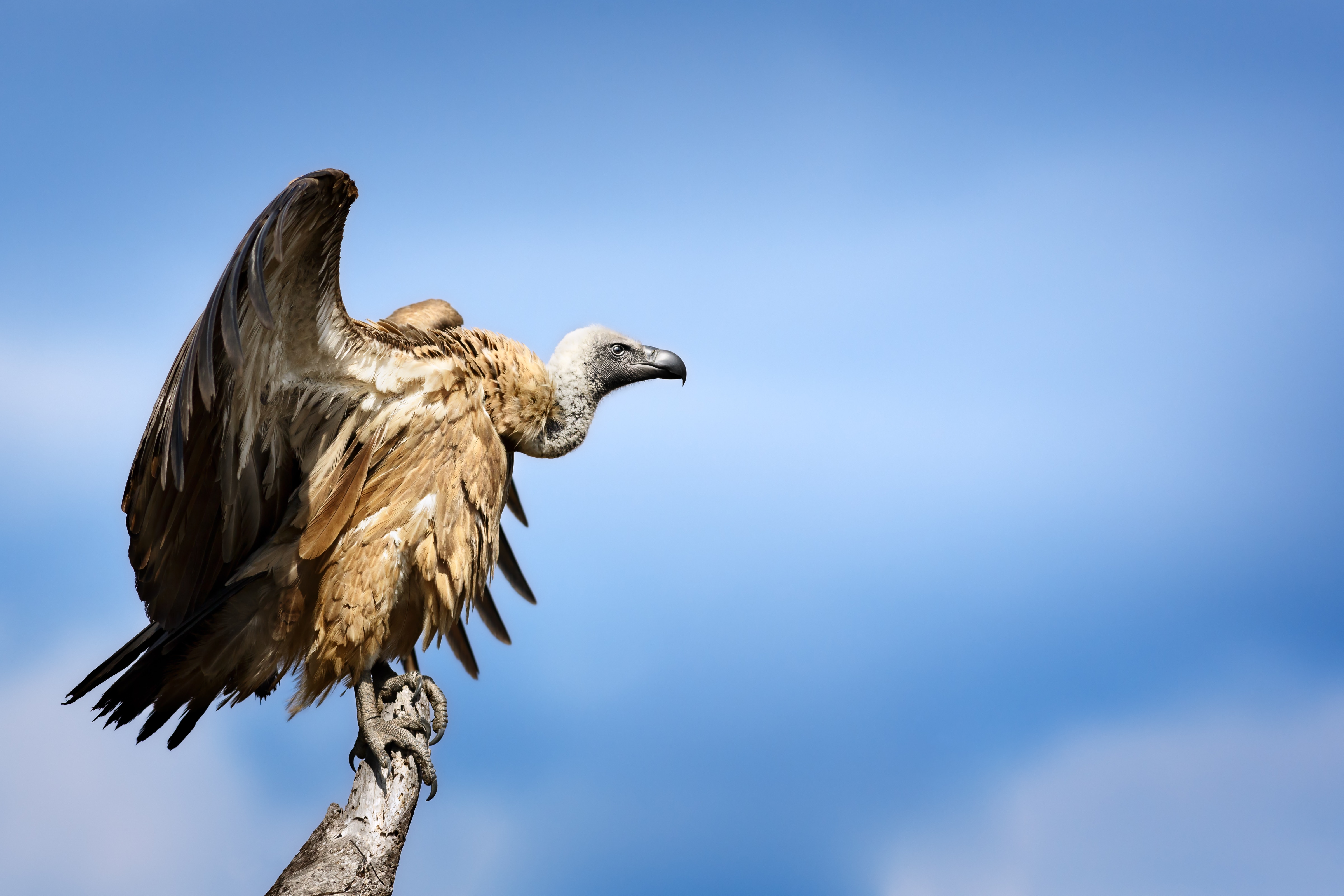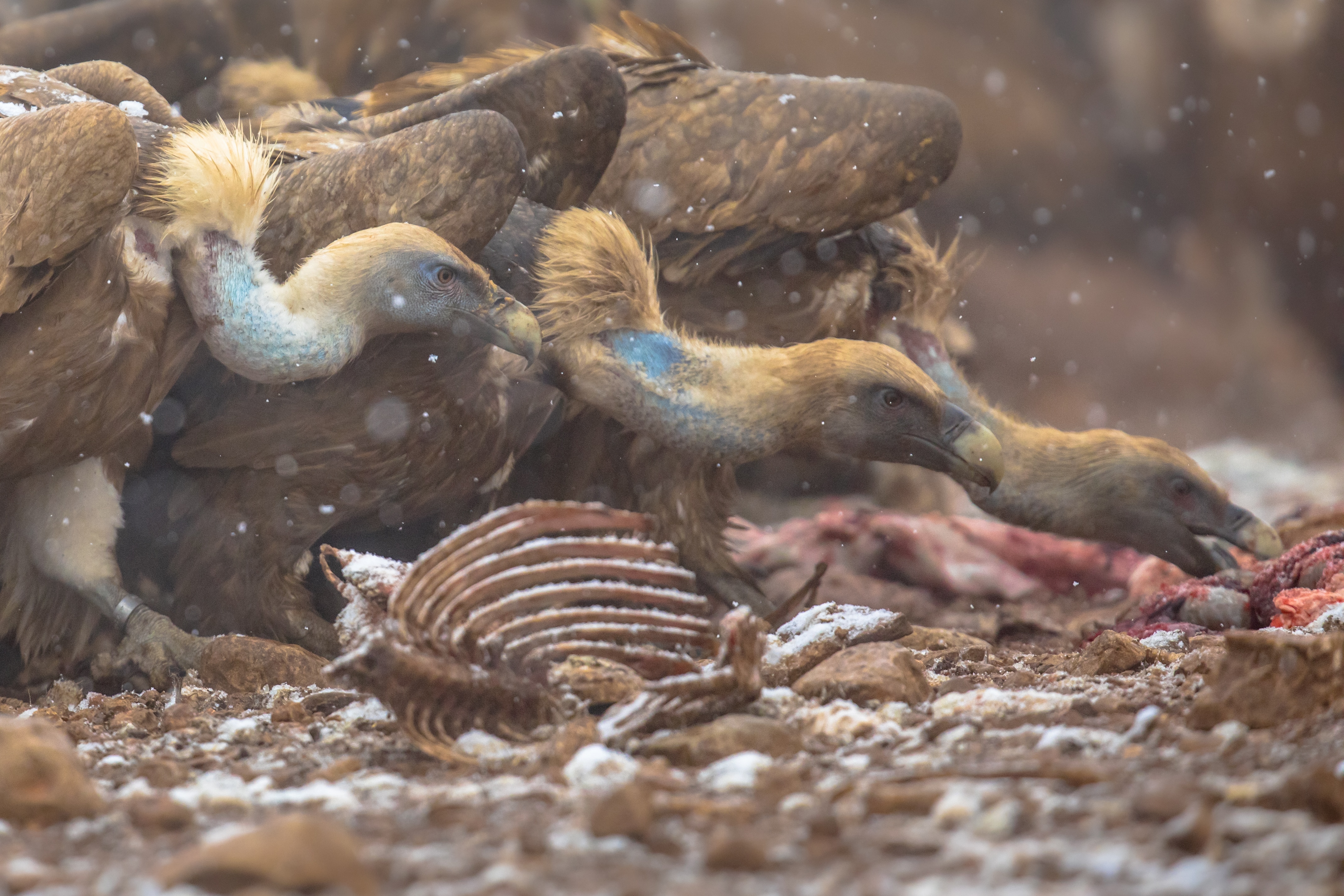BBC Earth newsletter
BBC Earth delivered direct to your inbox
Sign up to receive news, updates and exclusives from BBC Earth and related content from BBC Studios by email.
Birds
Have a bone to pick with the scraggy vulture? Just remember they’re vital as nature’s waste disposers – which is why their decline is very bad news…
Vultures, with their big, ungainly wings, beaky faces and fondness for scavenging on dead meat, have a terrible reputation. They are seen as harbingers of death, circling dying animals, ready to pick at decaying flesh. But they don’t deserve a bad press. They offer a vital service by feasting on carrion, protecting us from diseases spread by rotten meat and saving us the expense of cleaning it up. Yet their existence has been threatened thanks to us. In Southeast Asia, 98 per cent of vultures have been wiped out in 20 years. The white-backed vulture, long-billed vulture, slender-billed vulture, the Indian vulture and the Himalayan griffon are now officially ‘critically endangered’. The white-rumped vulture has dwindled from 80 million in the 1980s to only a few thousand today, a decline of 99.9 per cent.
The vastly reduced species are all Gyps, a genus of Old World vultures, typically with bald heads, beady eyes and a cloak of dark plumage. The kind you see feasting hungrily in cartoons. So, why have these creatures been dying in their droves in India? It’s mostly due to modern veterinary medicine. Vultures consume the carcasses of farmed animals, exposing them to a drug that gives them fatal kidney failure. That drug is diclofenac, prescribed to cattle to ease joint pain and keep them going for longer.

This first came to light in 2003 when there were reports of the near-extinction of the white-backed, slender-billed and Indian vultures due to unknown causes.
A year later Dr Lindsay Oaks, a researcher from Washington State University, backed by the Peregrine Fund, published a report in Nature proving the connection with diclofenac. He said: ‘This discovery is significant. It is the first known case of a pharmaceutical causing major ecological damage over a huge area and threatening three species with extinction.’ On 20 November 2005, the connection was further confirmed when villagers found an injured Himalayan griffon vulture at Kullu in India’s Himachal Pradesh. They took the bird to a veterinarian. It had a broken leg, so to treat the swelling and pain, the vet gave it diclofenac. Two days later the vulture was dead. It died from visceral gout of the kidney, caused by diclofenac toxicity. Dr Oaks’ team and later studies proved that when vultures eat the flesh of livestock dosed with the drug, the effect is fatal within days.
In March 2006 the Indian government threw vultures a lifeline by backing a ban of diclofenac. A similar drug, called meloxicam, was recommended as a ‘vulture safe’ alternative. However, diclofenac is cheaper than meloxicam and use of the drug in India continues.
Things are improving a little, however. A 2014 study in Philosophical Transactions of the Royal Society B cited research from the Royal Society for the Protection of Birds and other bodies, which studied vultures and cattle from 2006 to 2010. It found that, by 2009, the number of cattle carcasses treated with diclofenac fell by 49 per cent.
The knock-on result of this was that diclofenac-related vulture deaths had fallen by 65 per cent. It might be a case of too little, too late, however. Dr Toby Galligan, who is an RSPB scientist and co-author of this study, said: ‘The good news is that veterinary use of diclofenac in India has decreased significantly; the bad news is that it has not stopped completely.
‘This is because Indian pharmaceutical companies are manufacturing diclofenac for human use in vials large enough to treat livestock; and some veterinarians and livestock owners continue to choose [cheaper] diclofenac over the vulture-safe alternative, meloxicam.’
The Gyps species of vulture might not look cuddly, but it plays a vital ecological role. How so? The vultures are equipped with a digestive system that contains special acids that will dissolve anthrax, botulism and cholera bacteria.

That vultures can dispose of carrion and eliminate bacteria is useful, if not vital, in countries such as India, where cattle are valuable assets (for milk and dung for fuel) and are kept until they die of natural causes – but are not eaten.
Eating beef is not acceptable in much of the subcontinent on religious grounds, so vultures have performed a vital role in disposing of dead cattle. But there are no longer enough birds to do this effectively and the consequences are significant: an estimated 65 million cattle die in India each year, and must be properly, and expensively, disposed of.
The battle to save these vultures will be tough, but the cause of their decline is now clear and the campaign to preserve them is well under way.
Featured image © Carmine Arienzo